[English] 日本語
 Yorodumi
Yorodumi- PDB-5u98: The crystal structure of a self-peptide complexed to Abacavir and... -
+ Open data
Open data
- Basic information
Basic information
| Entry | Database: PDB / ID: 5u98 | ||||||
|---|---|---|---|---|---|---|---|
| Title | The crystal structure of a self-peptide complexed to Abacavir and HLA-B*57:01 | ||||||
 Components Components |
| ||||||
 Keywords Keywords | IMMUNE SYSTEM / MHC / ANTIGEN PRESENTING CELL / T-CELL RECEPTOR / HUMAN LEUKOCYTE ANTIGEN / DRUG HYPERSENSITIVITY / ABACAVIR HYPERSENSITIVITY / REPERTOIRE-ALTERING SMALL MOLECULE / IMMUNE RESPONSE / IMMUNOGLOBULIN-LIKE BETA-SANDWICH | ||||||
| Function / homology |  Function and homology information Function and homology informationnegative regulation of DNA-templated transcription, elongation / DSIF complex / regulation of transcription elongation by RNA polymerase II / regulation of interleukin-12 production / regulation of dendritic cell differentiation / regulation of T cell anergy / regulation of interleukin-6 production / positive regulation of DNA-templated transcription, elongation / Abortive elongation of HIV-1 transcript in the absence of Tat / transcription elongation-coupled chromatin remodeling ...negative regulation of DNA-templated transcription, elongation / DSIF complex / regulation of transcription elongation by RNA polymerase II / regulation of interleukin-12 production / regulation of dendritic cell differentiation / regulation of T cell anergy / regulation of interleukin-6 production / positive regulation of DNA-templated transcription, elongation / Abortive elongation of HIV-1 transcript in the absence of Tat / transcription elongation-coupled chromatin remodeling / RNA Pol II CTD phosphorylation and interaction with CE during HIV infection / RNA Pol II CTD phosphorylation and interaction with CE / Formation of the Early Elongation Complex / Formation of the HIV-1 Early Elongation Complex / mRNA Capping / TAP binding / protection from natural killer cell mediated cytotoxicity / Pausing and recovery of Tat-mediated HIV elongation / Tat-mediated HIV elongation arrest and recovery / positive regulation of macroautophagy / RNA polymerase II transcribes snRNA genes / antigen processing and presentation of endogenous peptide antigen via MHC class Ib / antigen processing and presentation of endogenous peptide antigen via MHC class I via ER pathway, TAP-independent / HIV elongation arrest and recovery / Pausing and recovery of HIV elongation / detection of bacterium / Tat-mediated elongation of the HIV-1 transcript / Formation of HIV-1 elongation complex containing HIV-1 Tat / Formation of HIV elongation complex in the absence of HIV Tat / RNA Polymerase II Transcription Elongation / Formation of RNA Pol II elongation complex / RNA Polymerase II Pre-transcription Events / secretory granule membrane / negative regulation of receptor binding / early endosome lumen / Nef mediated downregulation of MHC class I complex cell surface expression / DAP12 interactions / transferrin transport / cellular response to iron ion / Endosomal/Vacuolar pathway / Antigen Presentation: Folding, assembly and peptide loading of class I MHC / TP53 Regulates Transcription of DNA Repair Genes / peptide antigen assembly with MHC class II protein complex / lumenal side of endoplasmic reticulum membrane / transcription elongation by RNA polymerase II / cellular response to iron(III) ion / negative regulation of forebrain neuron differentiation / MHC class II protein complex / antigen processing and presentation of exogenous protein antigen via MHC class Ib, TAP-dependent / positive regulation of transcription elongation by RNA polymerase II / ER to Golgi transport vesicle membrane / peptide antigen assembly with MHC class I protein complex / regulation of iron ion transport / regulation of erythrocyte differentiation / defense response / HFE-transferrin receptor complex / response to molecule of bacterial origin / MHC class I peptide loading complex / T cell mediated cytotoxicity / positive regulation of T cell cytokine production / antigen processing and presentation of endogenous peptide antigen via MHC class I / antigen processing and presentation of exogenous peptide antigen via MHC class II / positive regulation of immune response / MHC class I protein complex / peptide antigen binding / positive regulation of T cell activation / negative regulation of neurogenesis / positive regulation of receptor-mediated endocytosis / cellular response to nicotine / positive regulation of T cell mediated cytotoxicity / multicellular organismal-level iron ion homeostasis / specific granule lumen / phagocytic vesicle membrane / recycling endosome membrane / Interferon gamma signaling / Immunoregulatory interactions between a Lymphoid and a non-Lymphoid cell / negative regulation of epithelial cell proliferation / MHC class II protein complex binding / Interferon alpha/beta signaling / Modulation by Mtb of host immune system / late endosome membrane / sensory perception of smell / positive regulation of cellular senescence / tertiary granule lumen / DAP12 signaling / T cell differentiation in thymus / negative regulation of neuron projection development / protein-folding chaperone binding / ER-Phagosome pathway / protein refolding / early endosome membrane / protein homotetramerization / amyloid fibril formation / adaptive immune response / intracellular iron ion homeostasis / learning or memory / immune response / endoplasmic reticulum lumen / protein heterodimerization activity / Amyloid fiber formation Similarity search - Function | ||||||
| Biological species |  Homo sapiens (human) Homo sapiens (human) | ||||||
| Method |  X-RAY DIFFRACTION / X-RAY DIFFRACTION /  SYNCHROTRON / SYNCHROTRON /  MOLECULAR REPLACEMENT / Resolution: 2 Å MOLECULAR REPLACEMENT / Resolution: 2 Å | ||||||
 Authors Authors | Ostrov, D.A. / Bracey, A.W. / Pompeu, Y.A. / Jakoncic, J. / Buus, S. / Buus, A.S. / Schutte, R.J. | ||||||
| Funding support |  United States, 1items United States, 1items
| ||||||
 Citation Citation |  Journal: Int J Mol Sci / Year: 2017 Journal: Int J Mol Sci / Year: 2017Title: Structural Elements Recognized by Abacavir-Induced T Cells. Authors: Yerly, D. / Pompeu, Y.A. / Schutte, R.J. / Eriksson, K.K. / Strhyn, A. / Bracey, A.W. / Buus, S. / Ostrov, D.A. | ||||||
| History |
|
- Structure visualization
Structure visualization
| Structure viewer | Molecule:  Molmil Molmil Jmol/JSmol Jmol/JSmol |
|---|
- Downloads & links
Downloads & links
- Download
Download
| PDBx/mmCIF format |  5u98.cif.gz 5u98.cif.gz | 188.5 KB | Display |  PDBx/mmCIF format PDBx/mmCIF format |
|---|---|---|---|---|
| PDB format |  pdb5u98.ent.gz pdb5u98.ent.gz | 148.1 KB | Display |  PDB format PDB format |
| PDBx/mmJSON format |  5u98.json.gz 5u98.json.gz | Tree view |  PDBx/mmJSON format PDBx/mmJSON format | |
| Others |  Other downloads Other downloads |
-Validation report
| Summary document |  5u98_validation.pdf.gz 5u98_validation.pdf.gz | 1 MB | Display |  wwPDB validaton report wwPDB validaton report |
|---|---|---|---|---|
| Full document |  5u98_full_validation.pdf.gz 5u98_full_validation.pdf.gz | 1 MB | Display | |
| Data in XML |  5u98_validation.xml.gz 5u98_validation.xml.gz | 38.9 KB | Display | |
| Data in CIF |  5u98_validation.cif.gz 5u98_validation.cif.gz | 58.1 KB | Display | |
| Arichive directory |  https://data.pdbj.org/pub/pdb/validation_reports/u9/5u98 https://data.pdbj.org/pub/pdb/validation_reports/u9/5u98 ftp://data.pdbj.org/pub/pdb/validation_reports/u9/5u98 ftp://data.pdbj.org/pub/pdb/validation_reports/u9/5u98 | HTTPS FTP |
-Related structure data
| Related structure data |  3uprS S: Starting model for refinement |
|---|---|
| Similar structure data |
- Links
Links
- Assembly
Assembly
| Deposited unit | 
| ||||||||
|---|---|---|---|---|---|---|---|---|---|
| 1 | 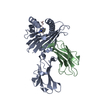
| ||||||||
| 2 | 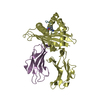
| ||||||||
| Unit cell |
|
- Components
Components
| #1: Protein | Mass: 31867.363 Da / Num. of mol.: 2 / Fragment: UNP residues 25-300 Source method: isolated from a genetically manipulated source Source: (gene. exp.)  Homo sapiens (human) / Gene: HLA-B, HLAB / Plasmid: PET / Production host: Homo sapiens (human) / Gene: HLA-B, HLAB / Plasmid: PET / Production host:  #2: Protein | Mass: 11748.160 Da / Num. of mol.: 2 / Fragment: UNP residues 21-119 Source method: isolated from a genetically manipulated source Source: (gene. exp.)  Homo sapiens (human) / Gene: B2M, CDABP0092, HDCMA22P / Plasmid: PET / Production host: Homo sapiens (human) / Gene: B2M, CDABP0092, HDCMA22P / Plasmid: PET / Production host:  #3: Protein/peptide | Mass: 1003.169 Da / Num. of mol.: 2 / Source method: obtained synthetically / Source: (synth.)  Homo sapiens (human) / References: UniProt: O00267*PLUS Homo sapiens (human) / References: UniProt: O00267*PLUS#4: Chemical | #5: Water | ChemComp-HOH / | Has protein modification | Y | |
|---|
-Experimental details
-Experiment
| Experiment | Method:  X-RAY DIFFRACTION / Number of used crystals: 1 X-RAY DIFFRACTION / Number of used crystals: 1 |
|---|
- Sample preparation
Sample preparation
| Crystal | Density Matthews: 2.88 Å3/Da / Density % sol: 57.23 % |
|---|---|
| Crystal grow | Temperature: 289 K / Method: vapor diffusion, hanging drop / pH: 6.5 Details: 0.1M NACACODYLATE, 0.1MNAACETATE, 25% PEG 8,000, 15% GLYCEROL |
-Data collection
| Diffraction | Mean temperature: 100 K |
|---|---|
| Diffraction source | Source:  SYNCHROTRON / Site: SYNCHROTRON / Site:  NSLS NSLS  / Beamline: X6A / Wavelength: 0.9436 Å / Beamline: X6A / Wavelength: 0.9436 Å |
| Detector | Type: ADSC QUANTUM 210 / Detector: CCD / Date: Aug 30, 2014 |
| Radiation | Protocol: SINGLE WAVELENGTH / Monochromatic (M) / Laue (L): M / Scattering type: x-ray |
| Radiation wavelength | Wavelength: 0.9436 Å / Relative weight: 1 |
| Reflection | Resolution: 2→28.323 Å / Num. obs: 69488 / % possible obs: 94.95 % / Redundancy: 4 % / Rmerge(I) obs: 0.27 / Net I/σ(I): 30.398 |
- Processing
Processing
| Software |
| ||||||||||||||||||||||||||||||||||||||||||||||||||||||||||||||||||||||||||||||||||||||||||||||||||
|---|---|---|---|---|---|---|---|---|---|---|---|---|---|---|---|---|---|---|---|---|---|---|---|---|---|---|---|---|---|---|---|---|---|---|---|---|---|---|---|---|---|---|---|---|---|---|---|---|---|---|---|---|---|---|---|---|---|---|---|---|---|---|---|---|---|---|---|---|---|---|---|---|---|---|---|---|---|---|---|---|---|---|---|---|---|---|---|---|---|---|---|---|---|---|---|---|---|---|---|
| Refinement | Method to determine structure:  MOLECULAR REPLACEMENT MOLECULAR REPLACEMENTStarting model: 3UPR Resolution: 2→28.323 Å / SU ML: 0.21 / Cross valid method: FREE R-VALUE / σ(F): 1.34 / Phase error: 22.56 / Stereochemistry target values: ML
| ||||||||||||||||||||||||||||||||||||||||||||||||||||||||||||||||||||||||||||||||||||||||||||||||||
| Solvent computation | Shrinkage radii: 0.9 Å / VDW probe radii: 1.11 Å / Solvent model: FLAT BULK SOLVENT MODEL | ||||||||||||||||||||||||||||||||||||||||||||||||||||||||||||||||||||||||||||||||||||||||||||||||||
| Refinement step | Cycle: LAST / Resolution: 2→28.323 Å
| ||||||||||||||||||||||||||||||||||||||||||||||||||||||||||||||||||||||||||||||||||||||||||||||||||
| Refine LS restraints |
| ||||||||||||||||||||||||||||||||||||||||||||||||||||||||||||||||||||||||||||||||||||||||||||||||||
| LS refinement shell |
|
 Movie
Movie Controller
Controller




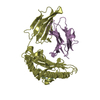
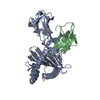
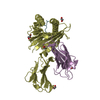
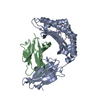
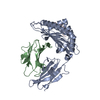



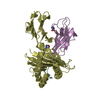

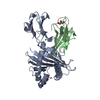
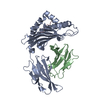
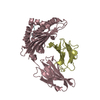
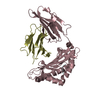
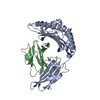
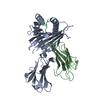
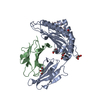
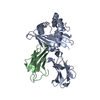
 PDBj
PDBj














